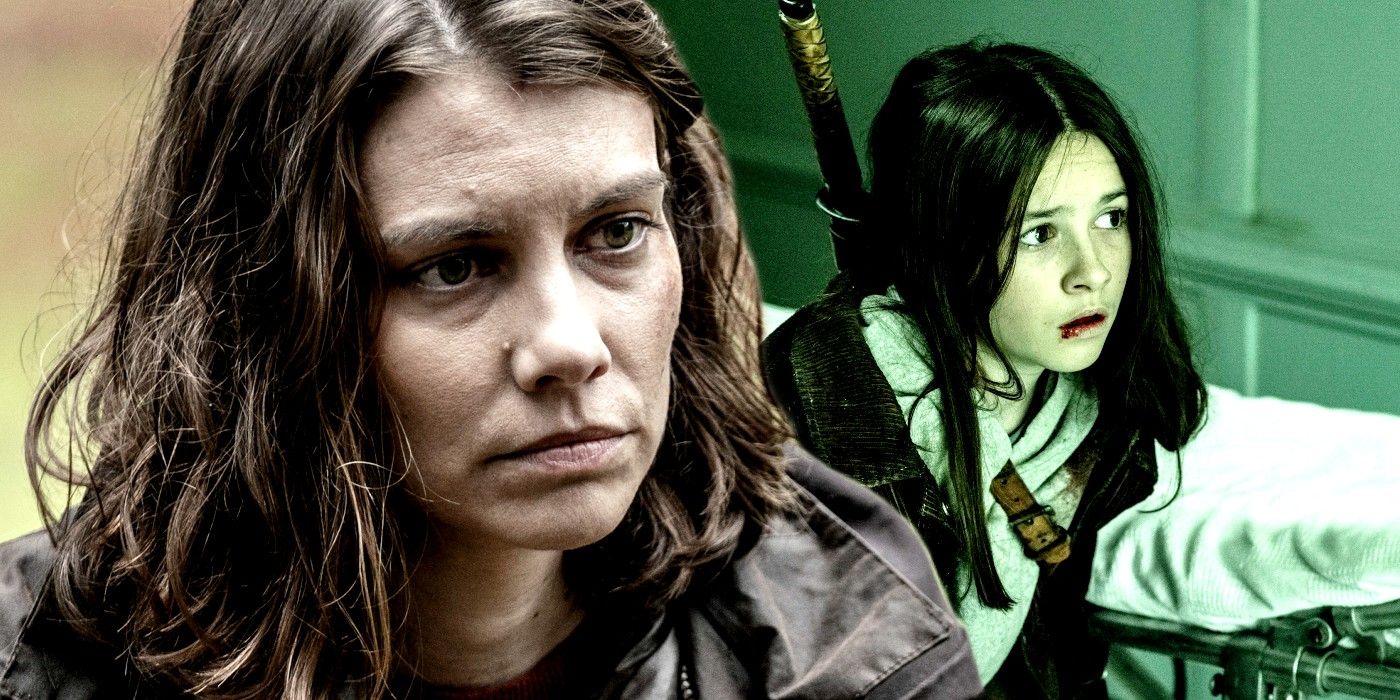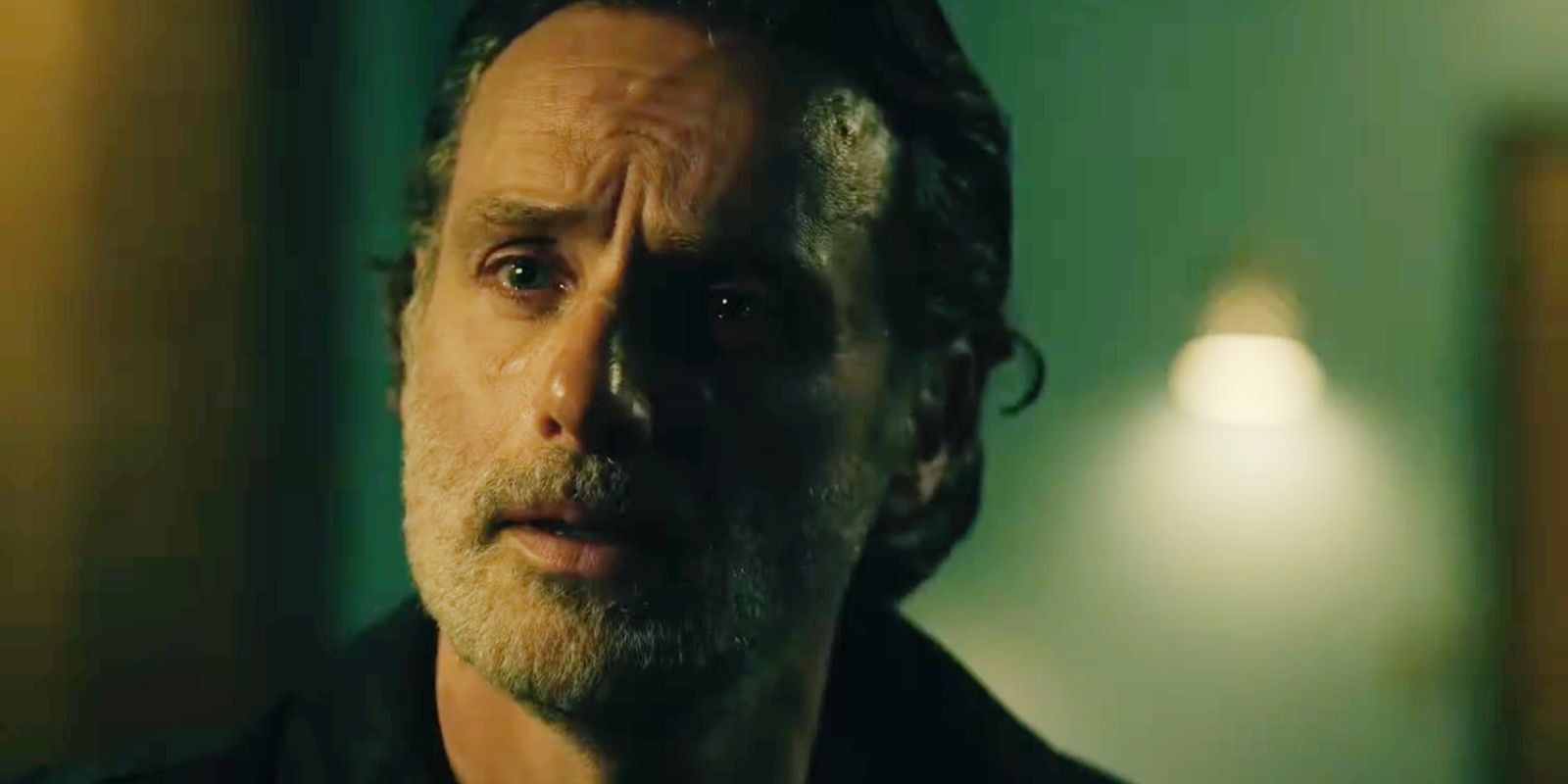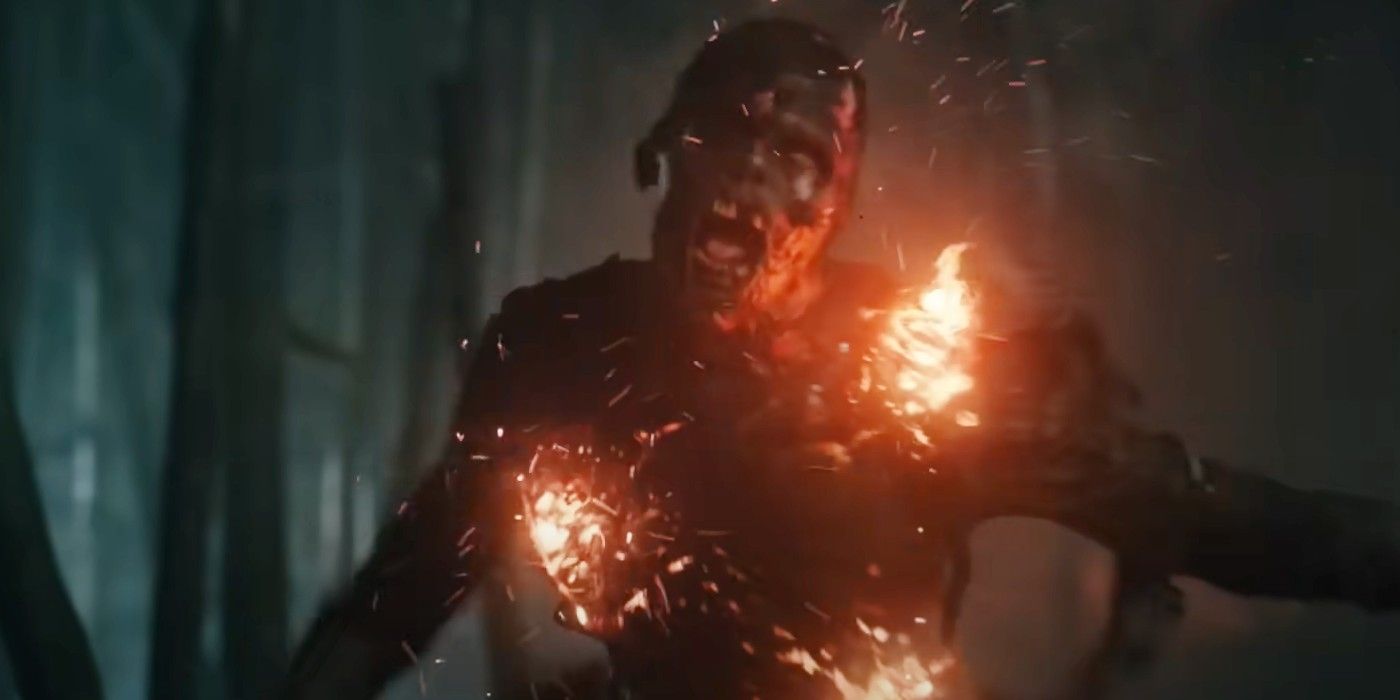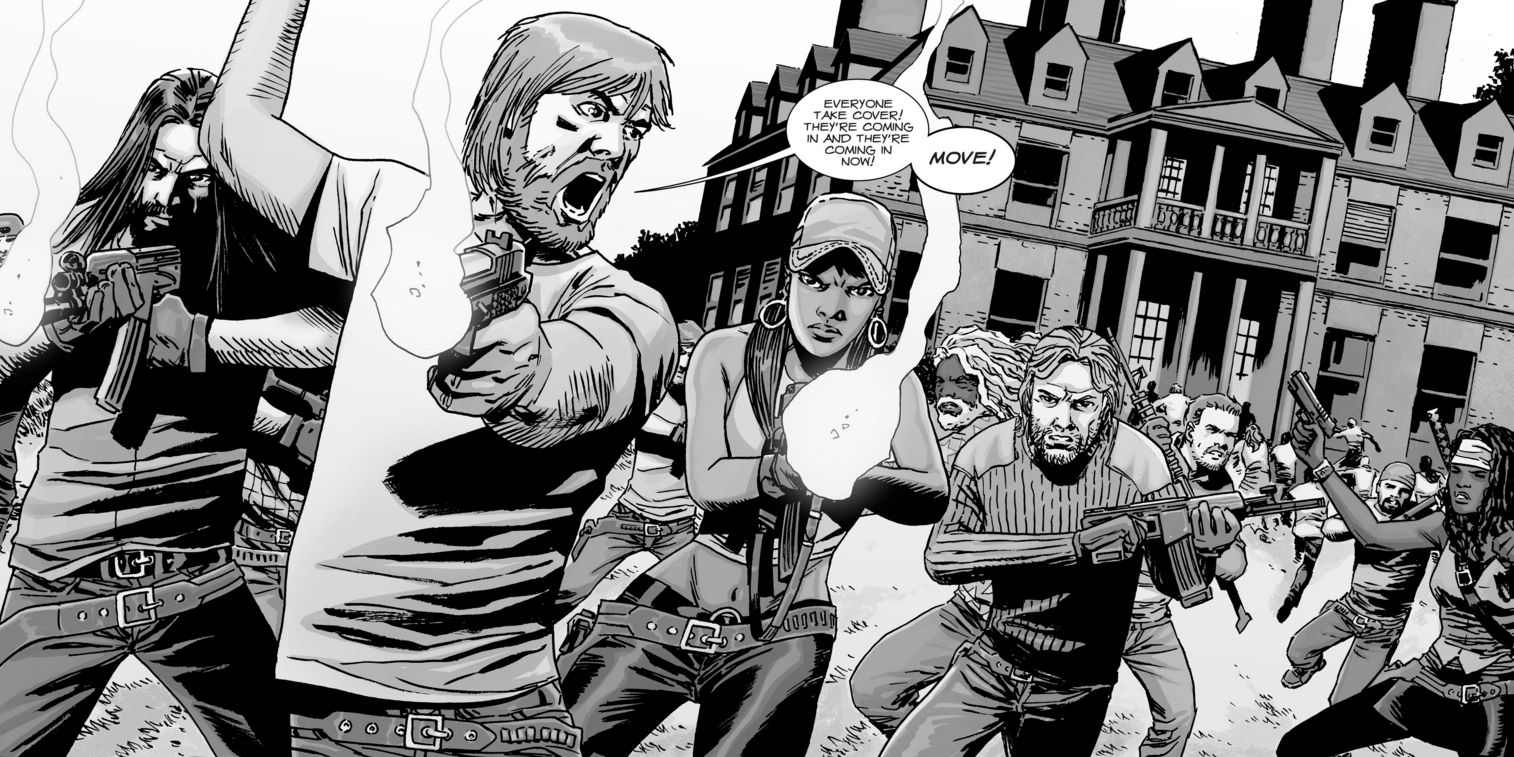The Walking Dead: The Ones Who Live adapts a key Rick Grimes comic book scene, but makes the already-dark moment even more disturbing in live-action.
An infamous moment from The Walking Dead‘s comic series has finally made the transition to live-action, but the TV version of events manages to be even darker. Rick Grimes losing one of his hands was among the most harrowing moments in Robert Kirkman’s The Walking Dead comic story – no mean feat given the sheer amount of guts and tragedy crammed into those volumes. The moment came shortly after Rick’s group first encountered the Governor. As punishment for crossing him, and to send a message to his new enemies, the villain chopped off Rick’s hand, serving as a true statement of intent for The Walking Dead.
Despite several close calls, Andrew Lincoln’s Rick Grimes never lost his hand in AMC’s The Walking Dead TV show. That changes in new The Walking Dead spinoff The Ones Who Live, which finally adapts the injury AMC’s main show avoided. While The Ones Who Live checks off one of the most famous moments from the comics that The Walking Dead hadn’t yet ticked, the circumstances of the scene are markedly different, and succeed in making Rick’s amputation even darker than in the source material.

The Walking Dead’s Rick Cuts Off His Own Hand In The TV Version

The mental fortitude and inner steel that Rick must find in order to consciously bring a blade down upon his own wrist makes the scene far more unsettling than just a bad guy seeking payback.
The biggest difference between Rick losing his hand in the comics and in The Walking Dead: The Ones Who Live is the person wielding the axe. Instead of the Governor, Rick Grimes performs the chopping himself in live-action. The hero’s hand being mutilated by a villain is one thing, and certainly not a comic panel that is comfortable to look at, but Rick inflicting the injury on himself is a different prospect entirely. The mental fortitude and inner steel that Rick must find in order to consciously bring a blade down upon his own wrist makes the scene far more unsettling than just a bad guy seeking payback.
The act of self-inflicted violence explicitly highlights Rick’s burning desire to return home and his desperation to see Michonne and Judith again – as well as the son he doesn’t even know exists. The misery of watching Rick cut off his own hand in a break for liberation is matched only by the fact that he fails. Despite taking such drastic measures to break free, The Walking Dead‘s CRM catches Rick within seconds, quashing his dreams before the grimace of pain has even faded from his face. The Ones Who Live takes an already tragic The Walking Dead moment and makes it even more emotionally agonizing.
What Rick Does Next In The Ones Who Live Is Even More Harrowing

And then it gets worse. Fresh from lopping off the end of his limb, Rick realizes that his plan had not been completely thought through and the dizziness resulting from heavy blood loss is hindering his chances of escape. In a strange turn of fortune, the CRM consignees had actually been clearing out zombies from a burning crop field, meaning many of the undead had caught fire. In an even greater show of grit and determination, Rick thrusts his bleeding wrist into the flaming guts of a lit walker, cauterizing the wound on this makeshift human furnace.
Why doesn’t Rick get infected after his open wound makes contact with zombie guts? Presumably, the heat burns away all infection during the cauterization process.
Once again, the extremes Rick goes to in The Walking Dead: The Ones Who Live make the comic version look relatively tame by comparison. This is partly due to the spinoff’s placement in The Walking Dead‘s timeline. When the Governor took Rick’s hand in the comics, Kirkman’s story was only just beginning, and the scene acted as a hint of the violence and brutality to come. The Walking Dead: The Ones Who Live arrives over a decade into the live-action adaptation and must, therefore, work harder to leave an impact upon viewers. Using a flaming corpse to cauterize a wound is definitely one way of going about that.
1 Way Rick Losing His Hand Had More Impact In The Walking Dead Comics

While Rick’s hand loss in The Walking Dead: The Ones Who Live is objectively darker than the corresponding comic panels, there is one perspective from which the opposite is true. When Robert Kirkman’s original prison arc was published, major Walking Dead characters experiencing life-changing injuries was still very much a novelty. After 11 seasons and multiple spinoffs, the same cannot be said for AMC’s live-action franchise. Carl lost an eye, Hershel lost a leg, Aaron lost a hand, Merle removed his own hand, Lydia lost some of her arm – and those examples are from the main show alone. In Fear The Walking Dead, Alicia Clark amputated her entire forearm with a rock.
After so much post-apocalyptic content, limb removals have almost become a run-of-the-mill occurrence in The Walking Dead. Any survivor with all body parts still intact at this stage could be considered lucky. While Rick cutting off his own hand in The Walking Dead: The Ones Who Live certainly takes a darker route than the comics, therefore, it could be argued that the latter version packed more punch.





